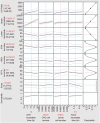Development of a mechanism of action-reflective, dual target cell-based reporter bioassay for a bispecific monoclonal antibody targeting human CTLA-4 and PD-1
- PMID: 33870864
- PMCID: PMC8078673
- DOI: 10.1080/19420862.2021.1914359
Development of a mechanism of action-reflective, dual target cell-based reporter bioassay for a bispecific monoclonal antibody targeting human CTLA-4 and PD-1
Abstract
T-cell-mediated immunotherapy has generated much excitement after the success of therapeutic biologics targeting immune checkpoint molecules. Bispecific antibodies (BsAbs) that recognize two antigen targets are a fast-growing class of biologics offering promising clinical benefits for cancer immunotherapy. Due to the complexity of the molecule structure and the potential mechanism of action (MOA) that involves more than one signaling pathway, it is critical to develop appropriate bioassays for measuring potency and characterizing the biological properties of BsAbs. Here, we present a dual target, cell-based reporter bioassay for a BsAb that binds human CTLA-4 and PD-1 and targets two subsequent signaling pathways that negatively regulate T-cell activation. This reporter bioassay is capable of measuring the potency of both antigen target arms in one assay, which would not be achievable using two single target bioassays. This dual target reporter bioassay demonstrates good performance characteristics suitable for lot release, stability testing, critical quality attribute assessment, and biological properties characterization of the CTLA-4/PD-1 BsAb. Furthermore, this assay can capture the synergistic effect of anti-CTLA-4 and anti-PD-1 activity of the BsAb. Compared to single target assays, this dual target bioassay could better reflect the potential MOA of BsAbs and could be used for evaluation of other bispecific biologics, as well as antibody combination therapies.
Keywords: bioassay; bispecific antibody; mechanism of action; potency; qualification.
Figures







References
-
- Kim HK, Heo MH, Lee HS, Sun JM, Lee SH, Ahn JS, Park K, Ahn MJ. Comparison of RECIST to immune-related response criteria in patients with non-small cell lung cancer treated with immune-checkpoint inhibitors. Cancer Chemother Pharmacol. 2017;80(3):591–98. doi:10.1007/s00280-017-3396-4. - DOI - PubMed
Publication types
MeSH terms
Substances
LinkOut - more resources
Full Text Sources
Other Literature Sources
